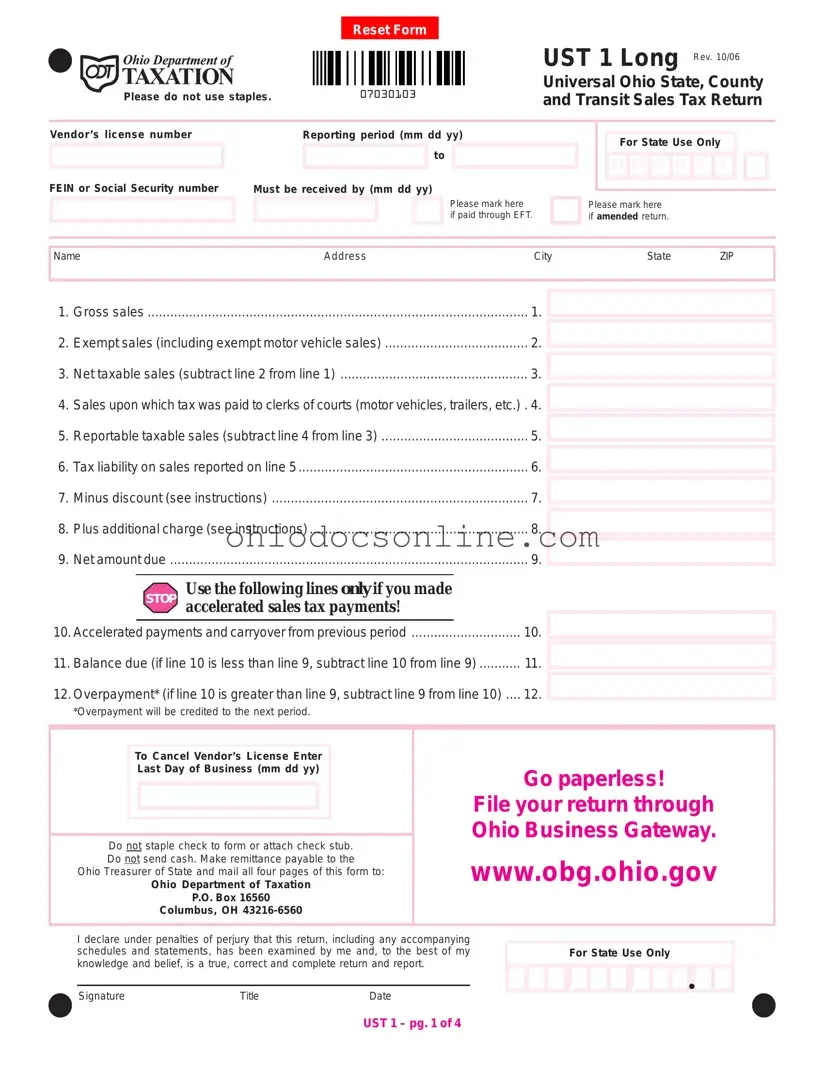Ohio Sales Tax Ust 1 Template in PDF
The Ohio Sales Tax UST 1 form is a crucial document for vendors operating in Ohio, as it facilitates the reporting of state, county, and transit sales taxes. This form must be completed accurately and submitted within the designated reporting period to ensure compliance with Ohio tax laws. Understanding its components is essential for any business owner looking to navigate the state's tax system effectively.
Open Editor
